Ask anyone about the advantages of LED lighting over HPS lighting, and chances are you'll get back: 'energy savings.' The market is now well aware of that fact. It is also an important reason why, as energy prices have risen, growers have switched to LED. Sometimes completely, sometimes in a hybrid installation (in which the HPS lamps are often switched off out of necessity).
But has any thought been given to what other light does to the plant? Not enough, an increasingly large part of the market realizes. Energy efficiency has taken precedence over plant efficiency. In two lighting trials with Lisianthus and cucumber at the World Horti Center led by Ary de Jong, lighting supplier RED Horticulture wants to show what their fixtures and choice of light recipes do to the plant, or even better: to the plant morphology.
The trials that have been running all winter are still running until 31 March. "We would therefore urge growers to be sure to come and have a look, even if they are not Lisianthus or cucumber growers," says HortiTech's cultivation manager. "After all, we would like to show growers with our own eyes what light does to a crop and that there is more to it than just saving energy."
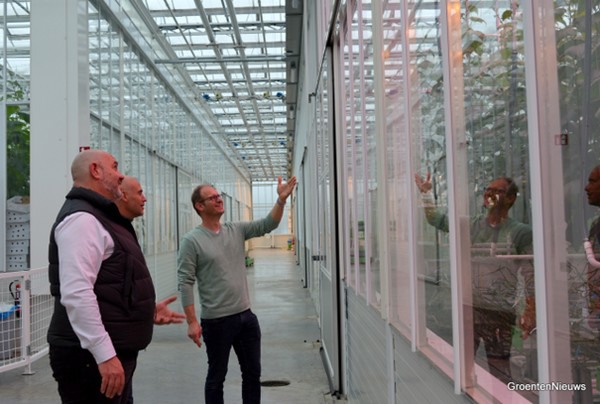
José Carretero and Alex Hogervorst of RED Horticulture and Ary de Jong of HortiTech at the department containing the cucumber demo. Two lighting strategies were used in it. A lighting strategy is a collection of several light recipes related to cultivation and cultivation phases, using different spectra per recipe/cultivation phase.
More than kilos
In the cucumber trial, three varieties are grown under a fixed and a dynamic LED spectrum in one department. This is different from Lisianthus, where special recipes are used for the three phases of cultivation. (This article discusses the trial in Lisianthus in more detail). On 19 October, cucumber plants were planted on two times four gutters. The aim was to at least match what is possible under HPS. That means, per plant, harvesting 75 cucumbers averaging 380 grams, with 2.5 potted plants per m2.
"That worked out fine under both lighting strategies for all varieties grown," Ary reveals. But that's not his primary concern. "The knowledge about LED in cucumber is not very big yet. Unlike in tomato, in cucumber hybrid lighting with LED and HPS is also not a one-two punch in the way lighting is done with lamps in the market now."
Investing in the factory
Alex Hogervorst and José Carretero are also there when Ary shows the trial. The Photobiology Support Manager and Sales Manager have had an office in the World Horti Center in Naaldwijk since the beginning of this year. This makes a Dutch branch of the originally French LED supplier a reality. Since its establishment, RED Horticulture has put five years of research and application into the development of LED lighting strategies with multiple recipes. And in the development of luminaires in which the spectrum is controllable, the system with the MyRED light management computer, sensors, and one-to-one support.
Since two years, the company has also been explicitly active in the Dutch market. "France has much less of an HPS tradition, as there is more natural sunlight. They, therefore, started looking early at the possibilities of LED as steering light," José indicates. "The lighting strategy that now hangs over the cucumbers here is the basic recipe for us," adds Alex. "After years of fine-tuning, that is now in place."
The necessary seed companies and growers already came to see the trial. In doing so, Ary invariably had them compare the same varieties on a gutter with a different spectrum above it. The simple question is then: what do you see? Growers logically tend to look quickly at fruit quantity.
However, the cultivator prefers to point out that under both spectra, the plants still look vital towards the end of the crop. "With the dynamic spectrum, we have invested in the root system, the 'factory', with spectrum selection early in the crop. What you do early in the cultivation, you see back now. The plants have more left, towards the end of cultivation, the plants continue to grow more easily." This is easy to see with the naked eye.
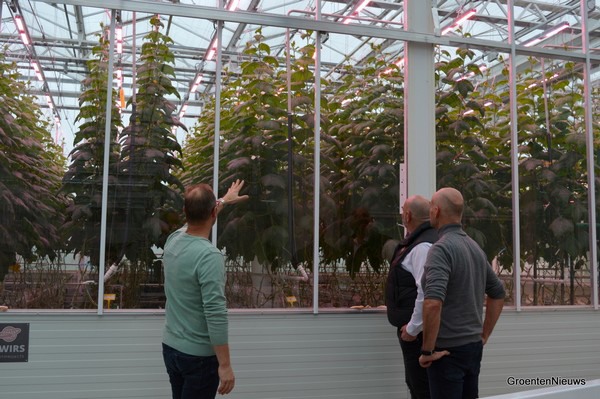
The trial is testing varieties from BASF, Enza Zaden, and Rijk Zwaan. Growers visiting the trial also ask questions about dehumidification. Ary did consider evaporation, but no special techniques were deployed apart from a vertical fan.
Flexibility
The trial is certainly not the last trial with LED, not for RED Horticulture and HortiTech but not in general either. Although LED lighting is becoming more established, there is still much to learn. In this regard, José points out, it helps if the fixture is able to move flexibly with the accumulation of knowledge. "Red light is now sometimes missed when the HPS lamps are off," he says. Ary nods. But it's also about flexibility in the form of being able to respond to changes in the greenhouse. José: "A tomato grower who has lamps hanging with a spectrum aimed at tomatoes may have problems if he wants to grow cucumbers with that same spectrum."
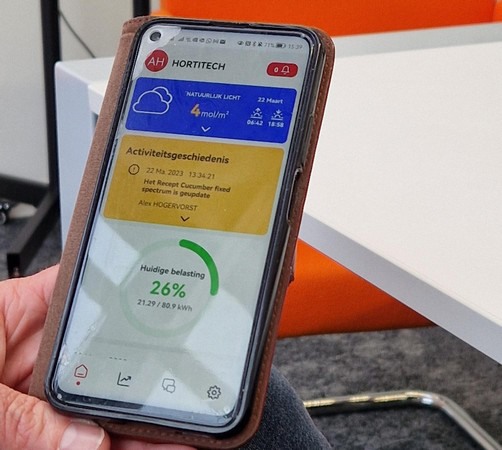
Steering can be done with the help of the MyRED app, including in response to natural sunlight.
Control
The MyRED platform enables wireless control of the luminaires. This is done on the basis of measurement data from the climate monitoring system Solstice. The fixtures and the Solstice cabinet are connected via a wireless Mesh network. The grower adjusts the spectrum during cultivation, for example, by switching on observation mode via the MyRED app. Practical for during harvesting.
"Each fixture is individually controllable," José points out. RED Horticulture offers a scalable concept with fixtures in four capacities. Growers who are just starting with the step to LED are usually - - not immediately given the option to start controlling the spectrum dynamically: "a piece of self-protection." Alex: "We choose to gradually give the grower more control options." Among other things, it is possible to steer dynamically by sunlight or power price. José: "With enough sun, you can then be the first to dim far-red and blue, the least energy-efficient colors." Meanwhile, research continues apace, with, at least if it is up to Ary, Alex, and José, also more attention to what LED light means for plant morphology.
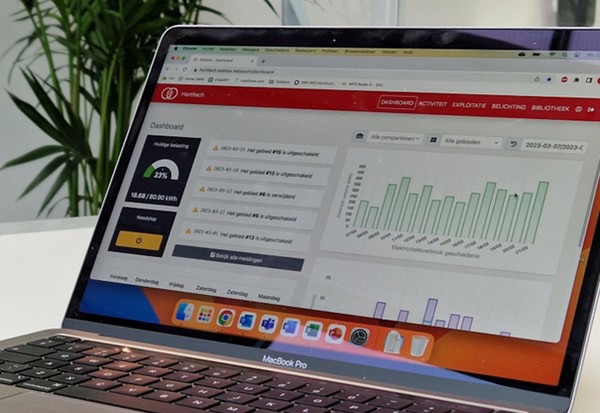
Understanding cultivation data through the MyRED platform
For more information:
Alex Hogervorst 
RED Horticulture
Tel.: +31 637295186
[email protected]
www.horticulture.red
Ary de Jong 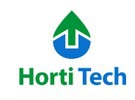
HortiTech
[email protected]
www.horti-tech.com
